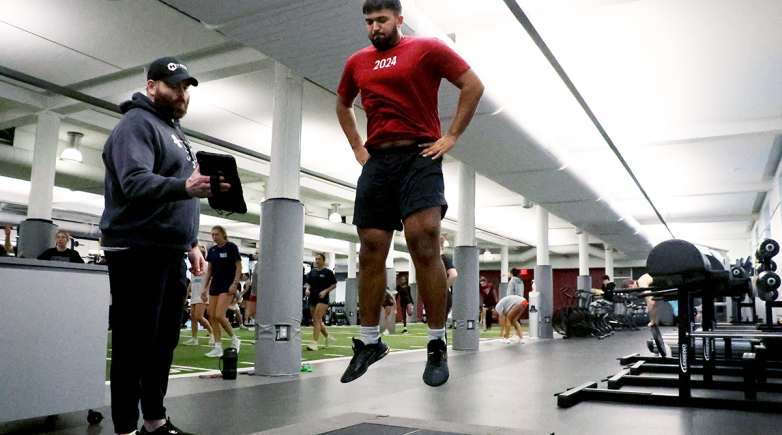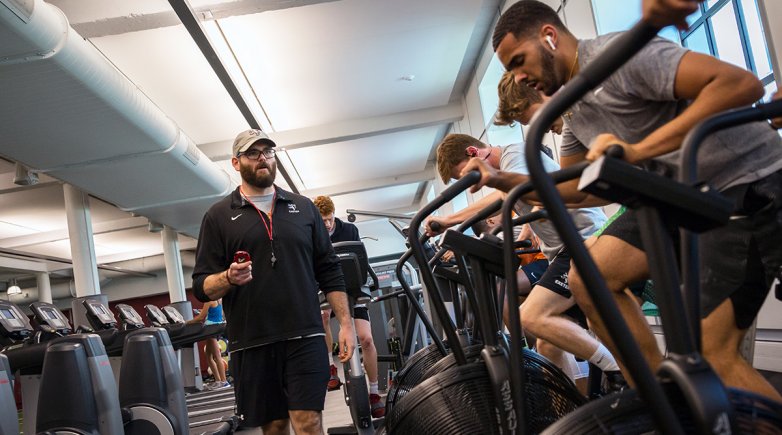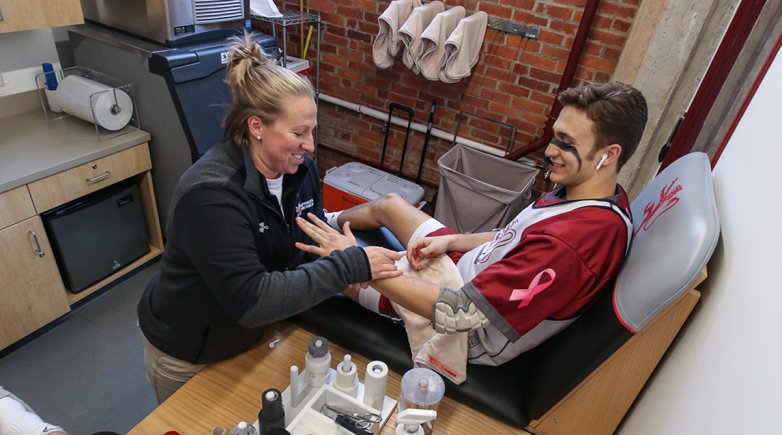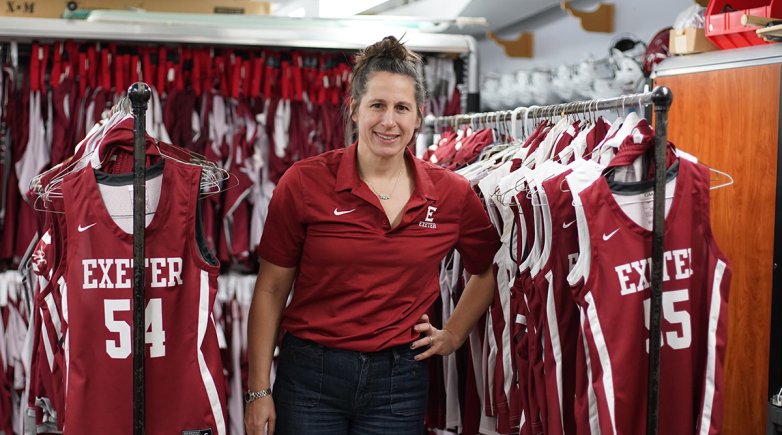Science in motion
New technology helps optimize Big Red athletic performance and recovery.
Football co-captain Nihaal Rana ’24 enters the Downer Family Fitness Center for an off-season workout after a full day of classes. He warms up quickly to the fast-paced rhythms pumping through the facility sound system, then greets head strength and conditioning coach Shaun Fishel, aligns his feet on the left and right side of a force plate deck, and gets ready to jump. Fishel pulls up Rana’s profile on an iPad and prepares a countdown for him to complete a series of countermovement jumps.
Rana stands with his hands on his hips, then squats and jumps as high as he can. As he leaps, a three-dimensional, full-body assessment camera captures his movements and more than 70 data points, including body weight, jump height and peak propulsive force. That data will help shape Rana’s workout program for peak performance.
Although force plates are new to Exeter, they are a staple in collegiate and professional strength and sports medicine facilities and have become part of medical testing at the NFL Scouting Combine.
“It is interesting to be able to track my progress,” Rana says. “Coaches want to know your weight and how much force you can create, so it is cool to be able to have this in our gym on campus.”
The data is also used to individualize strategies for injury prevention and rehabilitation. Fishel says the software includes an automatic flagging system that identifies potential body mechanic problems. For example, lower-limb asymmetries could alert trainers that a student is favoring one side because of tightness, injury or natural body development. Not all asymmetries need to be fixed, but the data identifies a student’s baseline.
The body assessment camera also notes potential body compensations that would raise a student’s risk of injury. Capturing a baseline measure of function offers a guide to any rehab program necessary for a student to return to play.
“This has been a game changer,” Director of Athletic Training Adam Hernandez says. “Having objective data that we can point to so we’re not guessing on how a student feels has allowed us to return students back from injury in a safer manner and has decreased the amount of time a student has a recurrence of an injury. We can look at the data and know how close they are to their normal.”
The jump tests can also create a motivational bond among teammates who use the technology during their scheduled in-season lifts.
“Whenever our team gets on the force plates, it’s a good chance to get everyone hyped up,” says Kate Rose ’24, co-captain of the varsity field hockey team. “We all yell and cheer each other on. It can be fun. We use the data to compete a little bit against each other, too.”
Although the programming, data and use of this equipment is supervised by the strength and conditioning staff, once students are trained they can test themselves and track their progress. The ability to view results in real time and notice developments, fatigue or other variances in their personalized data gives students ownership and responsibility for their training.
“Our students bring in exactly what they bring into the classroom with a sense of agency and a sense of wonder,” Hernandez says. “They want to see the data and want to understand what the data means. It gives us another opportunity to educate our students. We are arming them with data to ask good health questions, be stewards of their own health-care, and prepare them to be lifelong healthy individuals.”
Athletes are not the only beneficiaries. As Fishel says: “No matter what sport they play, or even if they do not play a sport, this technology offers data that we can look at to keep all students healthy.”
Editors Note: This article first appeared in the winter 2024 issue of The Exeter Bulletin.



